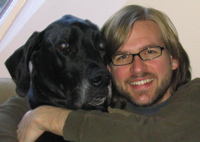 The only thing that will prevent our sculpture from running for a very long time is friction. Without friction, the momentum of the flywheel would lift the half gear all the way up to the full starting position repeatedly. Making a working model of the machine out of some other materials won't help us figure out how long the finished product will run (or if it will oscillate at all) because the friction is highly dependent on the materials and scale of the piece. We've turned instead to computer simulations.
The only thing that will prevent our sculpture from running for a very long time is friction. Without friction, the momentum of the flywheel would lift the half gear all the way up to the full starting position repeatedly. Making a working model of the machine out of some other materials won't help us figure out how long the finished product will run (or if it will oscillate at all) because the friction is highly dependent on the materials and scale of the piece. We've turned instead to computer simulations.
I had a perl script from two years ago that I used to calculate the moment of inertia of the clock's gear train, so I started with that and added a simulation loop. Modeling friction was the hardest part, but I think I have a reasonable approximation of friction's effect at this point. It accounts for the weight of the various components as well as the gear separating forces (spur gears tend to push away from each other as one drives the next), but my values for the coefficient of friction at various speeds are somewhat questionable.
Assuming the simulation is in the ballpark, it has helped us to optimize our design for maximum running time. Things that improve running time include:
- larger half gear radius
- thicker half gear
- larger flywheel radius
- thinner flywheel (to a point)
- higher gear ratio
- thinner stage 2 gears
With a few modifications based on these findings, our simulated running time has increased from 45 to 105 seconds.






No comments:
Post a Comment